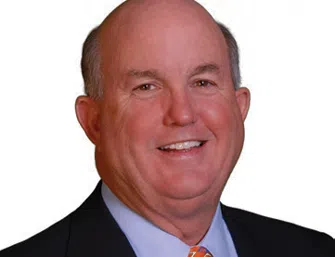Do you have “healthy” relationships with your customers? This checklist will tell you.

Most doctors firmly believe that certain types of regular screening tests and checkups are essential and help to save lives. And most of us, no matter how much we despise devoting an hour or more to getting poked and prodded, dutifully go for an annual checkup each year. After all, our health is vital to our overall well-being and happiness. Annual checkups can play a vital role in your professional health as well — especially with regard to client and customer relationships, which are the lifeblood of every business.
You should absolutely review the “health” of your client relationships on a regular basis. Here’s why: Most clients vote with their feet. They don’t tell you they are unhappy — they simply start to give their business to your competitors. Client relationship checkups can help you gauge the health of these relationships, prescribe changes when necessary, and identify ways to further grow them.
Infuse your client health checkups with what I call “power questions,” which are questions that light fires under people, challenge their assumptions, help them see problems in productive new ways, and inspire them to bare their souls (which, of course, strengthens the bonds in the relationship).
All business interactions are human interactions, and part of being human is acknowledging that you don’t know everything about everything — and that you certainly don’t know everything about the other person’s needs. Questions help you understand these things more deeply, and they’re an essential tool when assessing the health of client relationships.
When client relationship checkups aren’t performed regularly, the relationships can take unexpected turns. I know of a Fortune 100 company that was a longstanding client of IBM’s. IBM’s then-CEO Sam Palmisano decided to visit my client’s CEO. A week ahead of the visit my client’s relationship manager for IBM called his counterpart to discuss the upcoming CEO summit between their companies. Apparently he did not get a return phone call during that week! The story goes that when Palmisano met with their CEO, he opened by saying, ‘My people tell me we have an “A” relationship with your organization.’ My client’s CEO responded, ‘Well, my team tells me your relationship with us is a “C.’ ”
Fortunately, this was a wakeup call for the IBM team to dramatically improve the relationship with my client. Within a year, my client told me, the relationship was indeed an “A,” and today the company views IBM as a key trusted partner.
IBM is a great company that has been quite innovative in the way it builds long-term client relationships. But as this story illustrates, even well managed firms can dramatically misread the health of a key client relationship.
The successful firms I work with all have some type of process in place to determine the health and strength of their most important client relationships. They access the client’s views using a variety of channels — through the relationship manager, during senior executive visits, using independent surveys, and in client forums (virtual and in-person).
If you are unsure of the health of your client relationships, ask yourself these 10 questions:
1. Do I have access?
If there were such a figure as a “client relationship doctor,” Lloyds Banking Group Chairman Sir Winfried Bischoff would be the archetype. The former Schroders CEO and Citigroup chairman is a renowned trusted adviser who has calmly and wisely guided hundreds of CEOs through bet-the-company transactions and deals. I have talked with him and have asked, “How do you know when a relationship is not going well?” His first response was, “If it’s taking a very long time to set up a meeting, that’s usually a bad sign.”
Some leaders are notoriously busy, and it does take time to get on their schedules. But if you don’t have access, you may not be considered relevant. PS: If you think you have a good relationship, but the client says, “There’s nothing going on. It doesn’t make sense to meet,” that’s still a bad sign. It means they don’t really value your ongoing insight and perspective.
2. Do you and your client trust each other to do things without extensive documentation, checks, and controls?
Trust is the essential foundation of every long-term relationship. It’s the feeling that the other person will come through for you. It’s the belief that they will meet your expectations. It’s the confidence that they will demonstrate integrity, deliver competently, and focus on your agenda, not theirs.
When trust is present, you don’t need to constantly check up on the other person. You don’t need to put in place endless controls and systems to monitor results. If your client is constantly micromanaging you, then they may not trust you, and you need to find out why.
3. Does your client openly share information with you?
A healthy, trusting relationship, has transparency. Does your client give you access to their plans and proposals? Do they freely share information with you, within the constraints of confidentiality?
When you’re a vendor, you get very limited access to information — it’s on a need-to-know, restricted basis. When you’re a trusted adviser, your client treats you as part of the inner circle.
4. Does your client confide in you and bounce ideas and decisions off you?
Does your client ever call you up to run a new idea or potential proposal by you and get your opinion? Or do they make important decisions and then call you afterwards? It’s not reasonable to expect them to discuss everything with you. However, if they have an issue in your domain, and the relationship is a strong one, they will most likely draw you in before reaching their final conclusions.
5. Are you the first person the client calls when they need something in your area of expertise?
This is an essential litmus test of a healthy relationship: loyalty. If the client views you as interchangeable with other suppliers, then you’re a vendor, and you’ll be subjected to constant price pressure as the client continually shops around.
6. Are you treated with respect?
This is hard to quantify, but you usually will know in your gut if this is the case. I had a client whom I felt didn’t value me. He asked me to help teach his senior partners how to become more trusted advisers to their clients. But ironically, he didn’t want a trusted adviser himself — he wanted an arms-length “expert” who would be at his beck and call. I finished the project and moved on.
7. Is working with this client a satisfying, rewarding experience for you and your team?
Some clients just drain you. They are overly demanding, they check up on your every move, and they basically drive you crazy. Sometimes, you’re also stuck with a client who is too low in the organization to really appreciate the impact you have. This is not a healthy relationship! Life is too short — if you can’t fix a situation like this quickly, you should get out and double-down on more promising clients.
8. Is the relationship economically rewarding for you?
You could have a great personal relationship with a client, but for a variety of reasons be losing money on the work. Sometimes, weak profitability is your fault — you have underestimated the scope of the work or underpriced it. But sometimes it’s a sign of a client who knows the cost of everything and the value of nothing.
9. Are you having an impact and helping to improve your client’s business?
In the best relationships, you have a clear and positive impact on the client’s organization. You help the client improve their business. If, for whatever reason, this is not happening, it’s a warning sign. Are you working on peripheral issues that are not really important to the client? Are you stuck too far down in the organization? Is the client ignoring your recommendations? Is your good advice simply falling on deaf ears?
10. Is your client referring you to friends, colleagues, and other organizations that could use your expertise?
Active word-of-mouth referrals, arguably, are the ultimate sign of a good relationship. A testimonial is one thing — it’s passive — but an active referral is a sign of a very different level of satisfaction and delight with your services!
Just as you shouldn’t make assumptions about or neglect your own health, you shouldn’t do so when it comes to the health of your client relationships. Each year, go through this checklist and rate each of your relationships. Are you weak, average, or strong on each of these 10 points? Better yet, rate yourself and then ask these same questions to your client. Then, compare the answers.
Through quality communication and thoughtful “power questions”, you can strengthen your client relationships and add value to them at the same time.
Andrew Sobel is a widely published author on client loyalty and the capabilities required to build trusted business relationships. His first book, Clients for Life, defined an entire genre of business literature about client loyalty. In addition to Power Questions, his other books include Making Rain and the award-winning All for One:10 Strategies for Building Trusted Client Partnerships. For more information, see http://andrewsobel.com.






